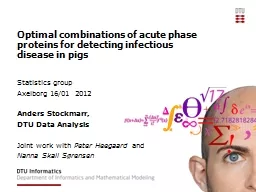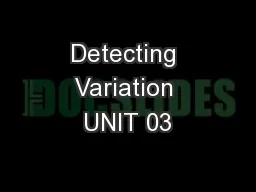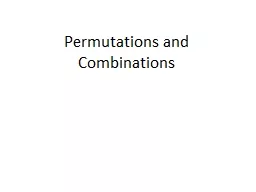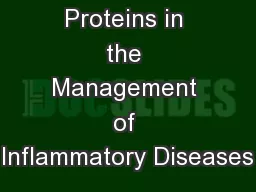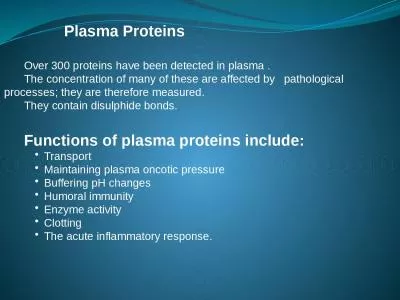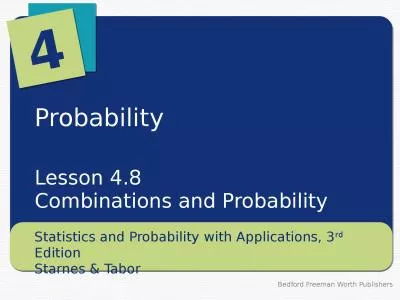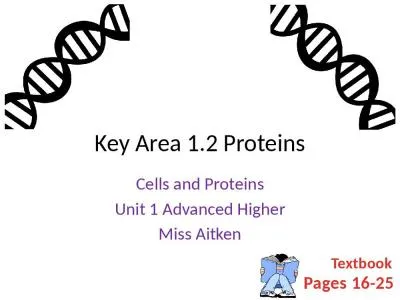PPT-Optimal combinations of acute phase proteins for detecting
Author : stefany-barnette | Published Date : 2018-01-11
Statistics group Axelborg 1601 2012 Anders Stockmarr DTU Data Analysis Joint work with Peter Heegaard and Nanna Skall Sørensen Acute Phase Proteins APPs Proteins
Presentation Embed Code
Download Presentation
Download Presentation The PPT/PDF document "Optimal combinations of acute phase prot..." is the property of its rightful owner. Permission is granted to download and print the materials on this website for personal, non-commercial use only, and to display it on your personal computer provided you do not modify the materials and that you retain all copyright notices contained in the materials. By downloading content from our website, you accept the terms of this agreement.
Optimal combinations of acute phase proteins for detecting: Transcript
Download Rules Of Document
"Optimal combinations of acute phase proteins for detecting"The content belongs to its owner. You may download and print it for personal use, without modification, and keep all copyright notices. By downloading, you agree to these terms.
Related Documents

